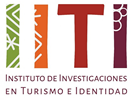Submissions
Submission Preparation Checklist
As part of the submission process, authors are required to check off their submission's compliance with all of the following items, and submissions may be returned to authors that do not adhere to these guidelines.- In the case of the DOSSIER, the article responds to the proposed thematic line.
- Be original contributions of the authors and not be published, totally or partially, or on a waiting list in another publication.
- Be of a scientific nature and be carried out based on research on issues related to tourism and heritage today.
- The submission file is in .doc or .docx format.
- The review is based on books or magazines that deal with the theme of the magazine.
- The text complies with the publication standards and guidelines published on this website.
- Comply with international standards on conflict of interest and ethical standards.
- Adhere to the Creative Commons license called "Attribution - Non-Commercial - Share Alike CC BY-NC-SA", through which the author allows the author to copy, reproduce, distribute or publicly communicate the work and generate derivative works, as long as it is cited and Please acknowledge the original author. It is not allowed, however, to use the work for commercial purposes.
Articles
It presents unpublished and original articles that address issues related to tourism and heritage today, in search of new options and alternatives for their future. The articles are of a scientific nature and are subjected to peer review by two external evaluators. Papers should not exceed 12,000 words, including footnotes, charts and tables, list of bibliography and sources.
Thematic dossier
Gather articles (up to 12,000 words), debates or problems on a common theme. The section can be organized by guest editors or by researchers who wish to promote interdisciplinary dialogue or new areas of research. The works must be unpublished and original.
Notes of interest
It includes short writings (up to 6,000 words) on topics related to the magazine, interviews and comments on documentary sources.
Research projects
Individual research projects, of chairs or endorsed by different organizations: national, international. Conicet, Siip, FFyL, or by the IITI.
Review
It disseminates recently published books on issues related to tourism and heritage today, in search of new options and alternatives for their future. Reviews cannot exceed 2,000 words.
Copyright Notice
Reproduction of articles is permitted as long as the source is cited.
This journal provides immediate open access to its content, and does not charge any fees for published papers or for papers submitted for review, review, publication, distribution, or download. The magazine does not charge APC fees and uses the following Creative Commons license for its content:
Attribution-NonCommercial-ShareAlike 4.0 International (CC BY-NC 4.0): Its terms allow sharing (copying and redistributing the material in any medium or format) and adapting (remixing, transforming, and building upon the material), under the terms following terms:
- Attribution — You must give appropriate credit, provide a link to the license, and indicate if any changes have been made. You may do so in any reasonable way, but not in any way that suggests that you or your use is endorsed by the Licensor.
- NonCommercial — You may not use the material for commercial purposes.
- ShareAlike — If you remix, transform, or build upon the material, you must distribute your contribution under the same license as the original.
- No additional restrictions — You may not apply legal terms or technological measures that legally restrict others from making any use permitted by the license.
Privacy Statement
The names and email addresses entered in this journal site will be used exclusively for the stated purposes of this journal and will not be made available for any other purpose or to any other party.

















